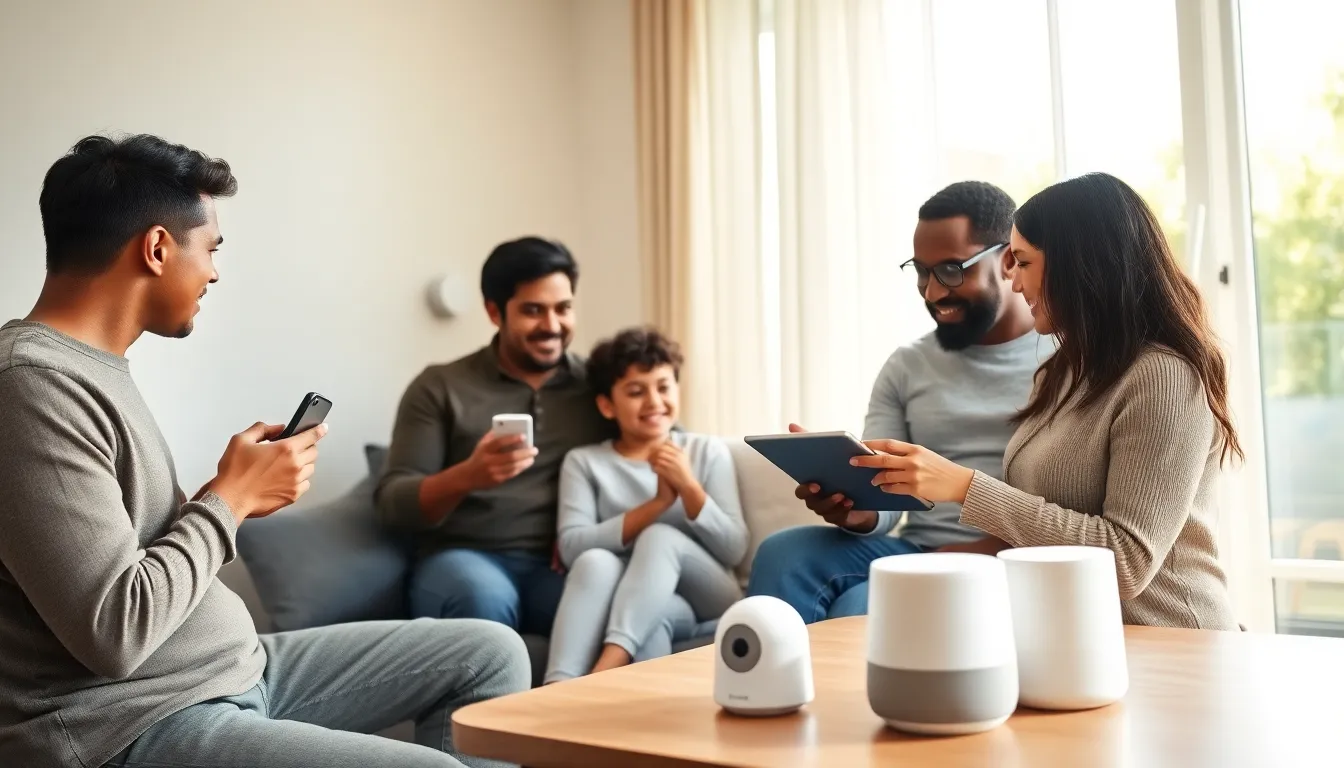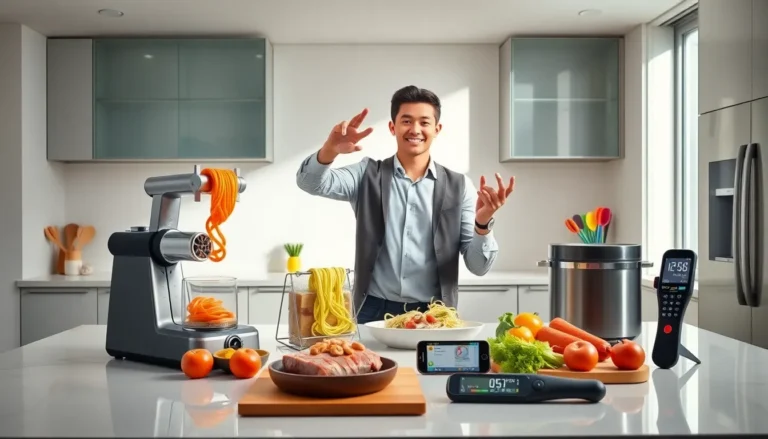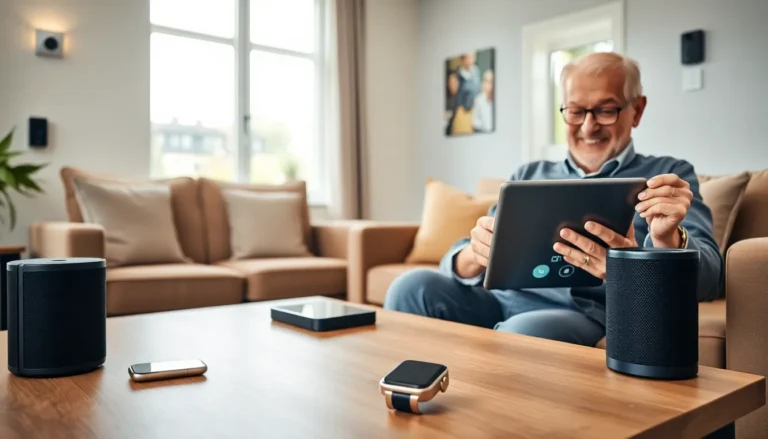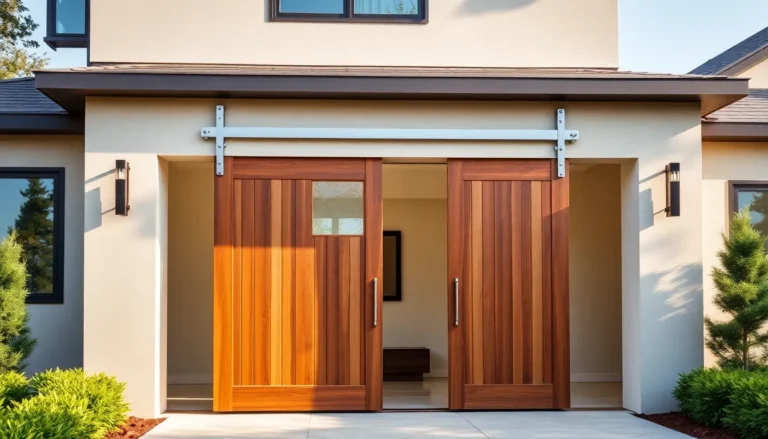Picture this: you walk into your house, and the lights automatically turn on while your favorite playlist begins to play. You grab a snack from your smart fridge, which reminds you that your yogurt is about to expire. Sounds like a scene from a futuristic movie, doesn’t it? Welcome to the world of Internet of Things (IoT) home automation, where your home isn’t just a place to live: it’s a smart, responsive environment. In this text, we’ll explore how home automation can change your daily life, making it not just efficient but also a little more fun. Let’s immerse.
Table of Contents
ToggleUnderstanding Home Automation

What Is Home Automation?
Home automation refers to the control of home devices through the internet. It allows homeowners to manage everything from lights and heating to security systems remotely, using their smartphones and tablets. This technology embodies the essence of convenience, providing an interface that lets you communicate with your home and automate various tasks.
Importance Of Home Automation
The importance of home automation cannot be overstated. Firstly, it enhances the quality of life. Imagine being able to adjust the temperature of your home while sitting in your car, just before you arrive. It’s all about comfort and convenience. Also, efficient automation can lead to significant energy savings, helping users not just lower their bills but also reduce their carbon footprints. Security is another critical factor: smart devices allow real-time monitoring, giving homeowners peace of mind.
Key Components Of Home Automation
Smart Devices And Technology
At the heart of home automation are smart devices. These include smart speakers, lighting systems, security cameras, and thermostats, all designed to work cohesively. They use various technologies like Wi-Fi, Bluetooth, and Zigbee to communicate with each other, forming a network that understands and responds to your needs. The compatibility of devices plays a big role: hence, choosing brands that work well together is essential for a seamless experience.
Networking Protocols
Networking protocols are the unsung heroes of home automation. They determine how devices communicate with each other and can significantly impact the system’s responsiveness and reliability. Common protocols include Wi-Fi, Zigbee, and Z-Wave. Each has its benefits and drawbacks: for instance, Zigbee is known for low energy consumption but has a limited range compared to Wi-Fi. Understanding these protocols helps in creating a robust automated home.
Integrating IoT Into Home Automation
Popular IoT Devices For Home Automation
IoT devices are revolutionizing the home automation landscape. Think smart thermostats like the Nest, which learns your preferences and optimizes energy usage accordingly. Smart security systems combine cameras, motion detectors, and alarms to provide comprehensive safety solutions. Then there are smart kitchen gadgets, like IoT-enabled refrigerators and coffee makers, that make cooking and meal prep a delightful experience. The integration of these devices leads to unprecedented control and efficiency.
Security And Privacy Considerations
While the benefits of IoT in home automation are wide-ranging, security and privacy remain paramount. With devices constantly collecting data, homeowners need to be vigilant about cybersecurity. Employing strong passwords, enabling two-factor authentication, and regularly updating device software are a few ways to bolster security. Remember, a smart home is only as secure as its weakest link.
Future Trends In Home Automation
AI And Machine Learning Integration
Artificial Intelligence (AI) and machine learning are set to take home automation to the next level. Imagine a system that predicts your needs based on your daily habits. For instance, a smart thermostat could learn your schedule and adjust temperatures accordingly, ensuring maximum comfort with minimal energy use. Voice-controlled assistants are already making waves, but the future holds even more interactive and intuitive interfaces, as home automation evolves, these technologies will become more user-friendly and capable.
Energy Efficiency And Sustainability
Sustainability is a growing trend in home automation. Smart homes contribute to energy efficiency by optimizing power consumption. Future advancements may include energy-monitoring systems that provide real-time feedback, enabling users to minimize waste. Innovations like solar panels and smart grids will integrate seamlessly with home automation systems, offering a more sustainable approach to energy management.





